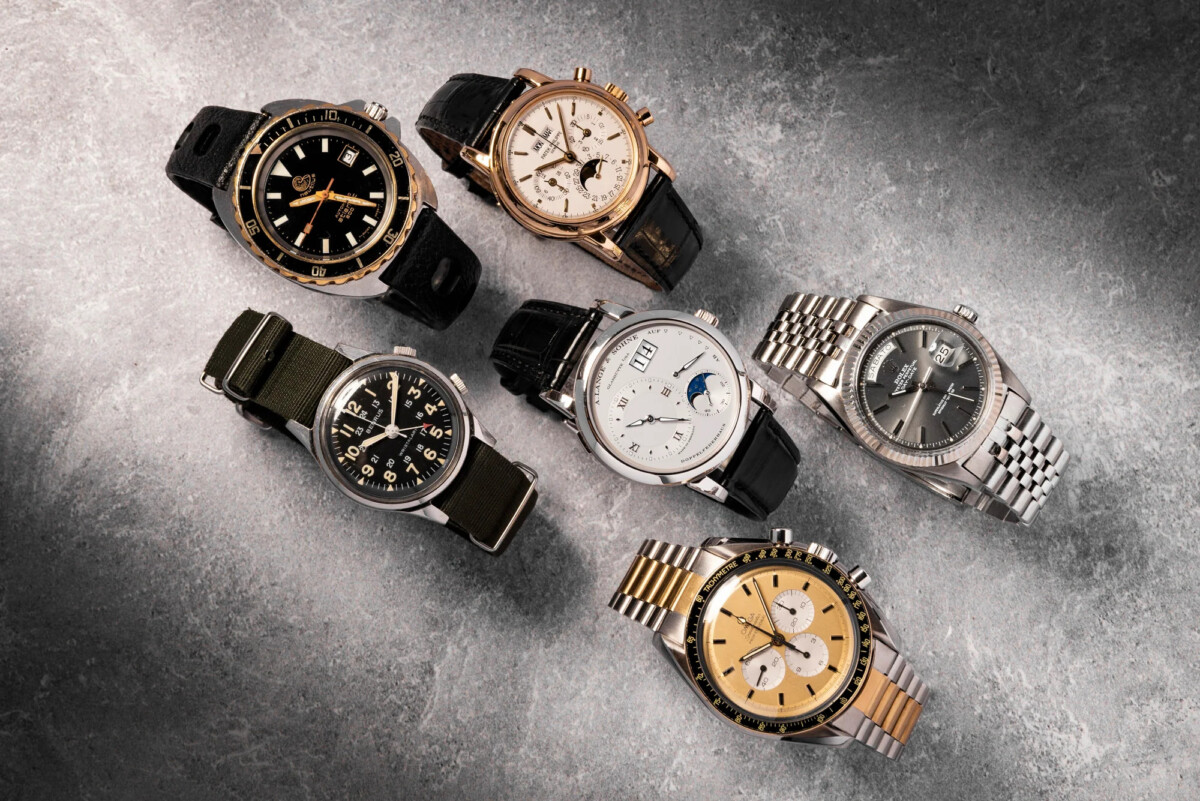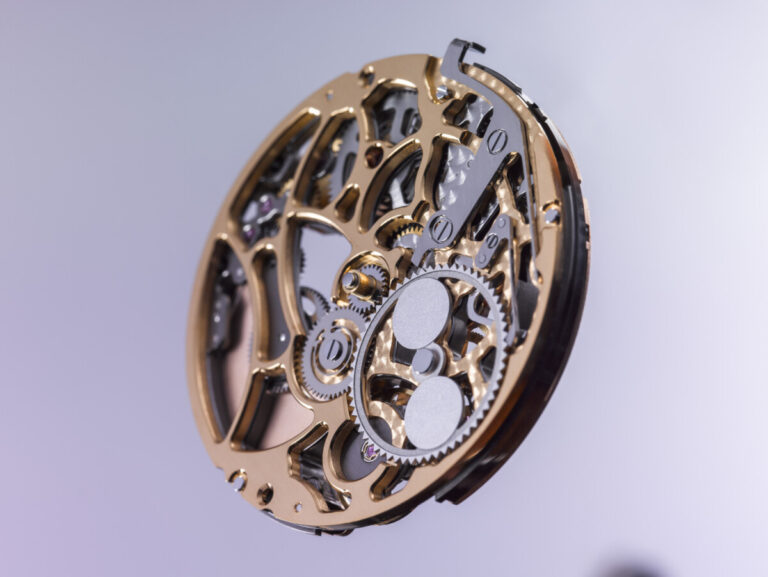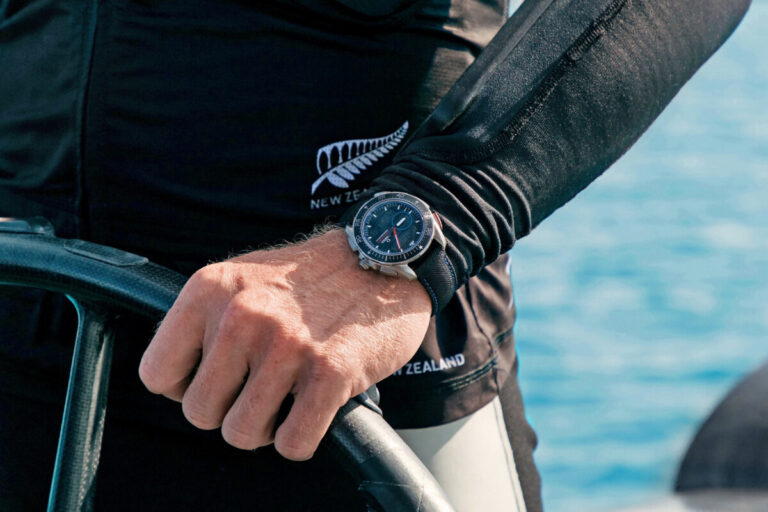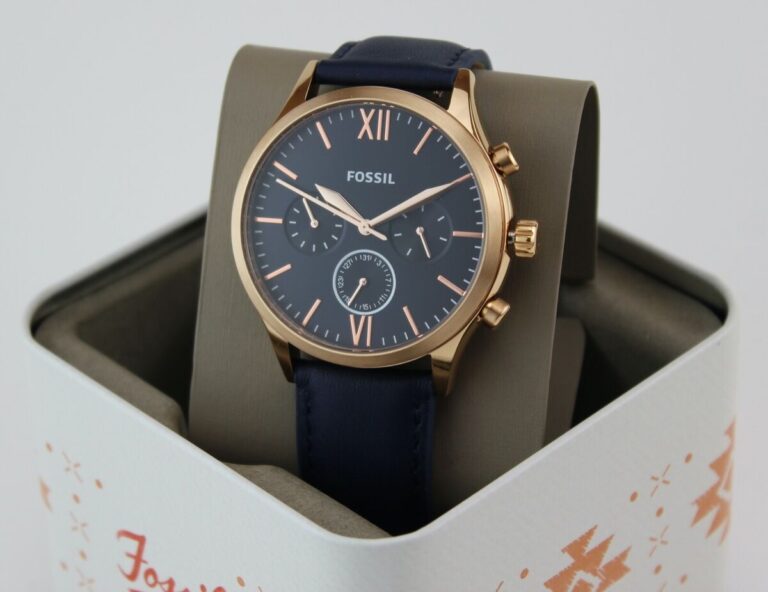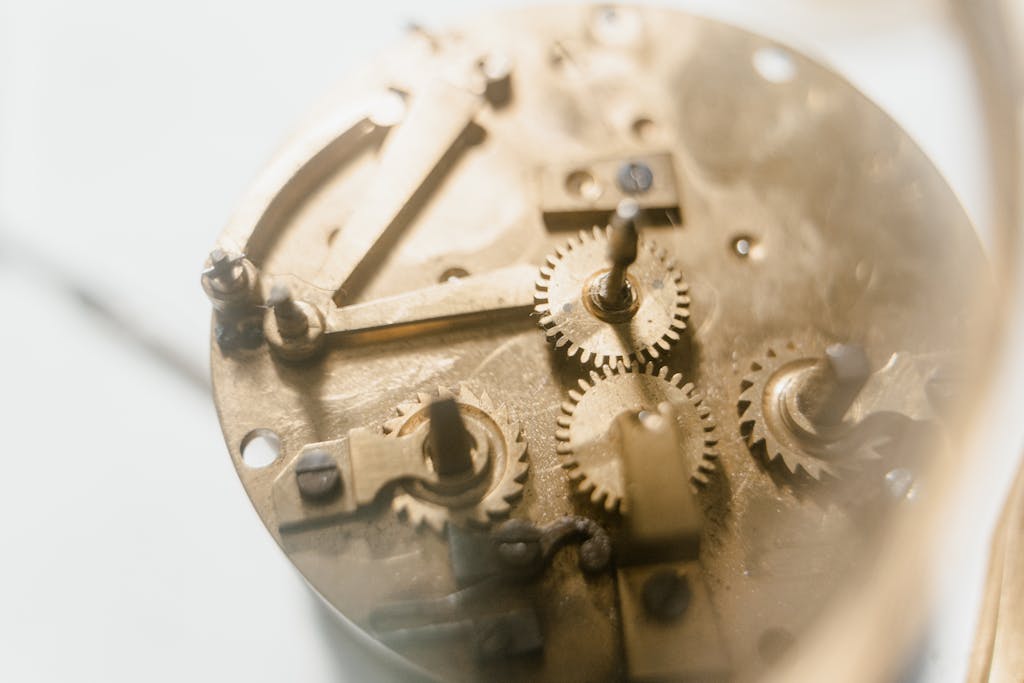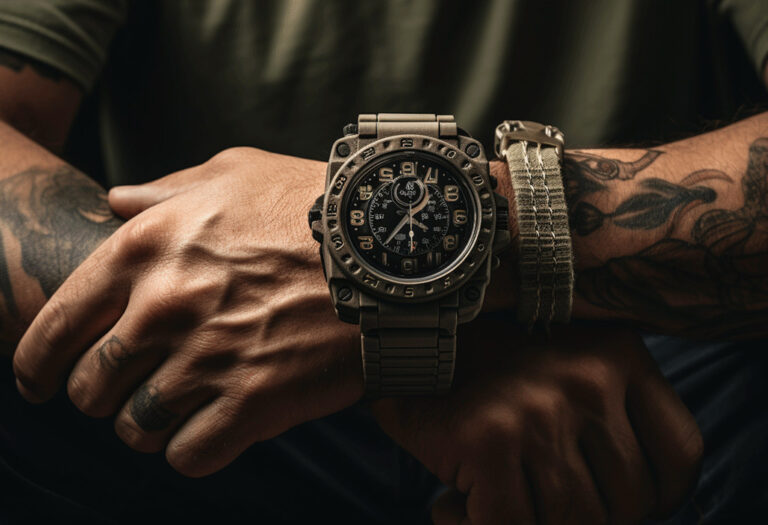In the world of horology, watch complications are the features that elevate timepieces from simple time-telling devices to marvels of engineering and craftsmanship. These additional functions have captivated watch enthusiasts for decades, with some of the most complicated watches fetching millions at auction. But what exactly are watch complications, and why are they so important? This comprehensive guide will explore the fascinating world of watch complications, from the most common to the rarest and most intricate.
What is a Watch Complication?
A watch complication is any function on a timepiece beyond its basic time-telling capability. The first wristwatch complication, introduced by Swiss watchmaker Hammerly in 1915, was the humble date window. Since then, complications have evolved to include a wide range of functions, from simple date displays to highly complex astronomical features.
Complications can vary greatly in their complexity:
- Some are so common we take them for granted, like the date display on a Rolex Submariner Date.
- Others are so intricate that they require master-level specialty skills to create, such as the perpetual calendar or minute repeater.
Many complications utilize subdials, which are smaller dials on the main watch face. These subdials can display various functions, including chronograph measurements, power reserves, moonphases, and additional time zones.
Date Complications
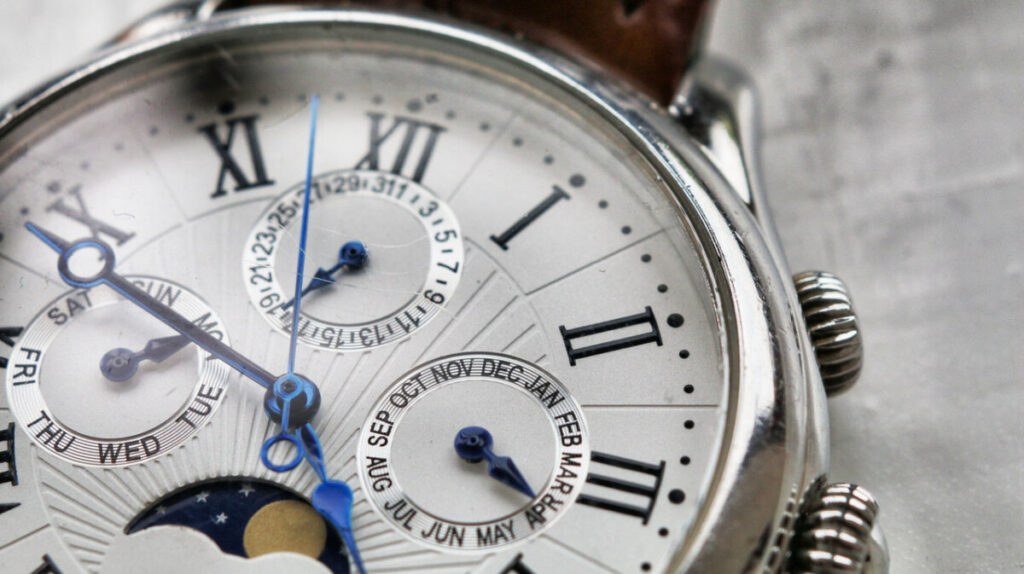
The date complication is one of the most common and practical features in modern watches. It comes in several variations:
- Date Window/Aperture: A small window, usually near the 3 o’clock position, displaying the current date. Some high-end watches, like Rolex, often include a “Cyclops lens” to magnify the date for better legibility.
- Big Date: A larger date display, often using two windows for tens and ones digits. This format improves readability and is frequently found at the top of the dial.
- Subdial Date: The date is displayed in a small auxiliary dial, typically featuring numbers 1 through 31. While not as easily readable, it adds a unique aesthetic to the watch face.
- Bankers Date: Also known as a pointer date, this format displays the dates around the edge of the dial, with a long central hand pointing to the current date.
- Day-Date Complication: This feature shows both the day of the week and the date, either side by side or in separate locations on the dial.
Calendar Complications
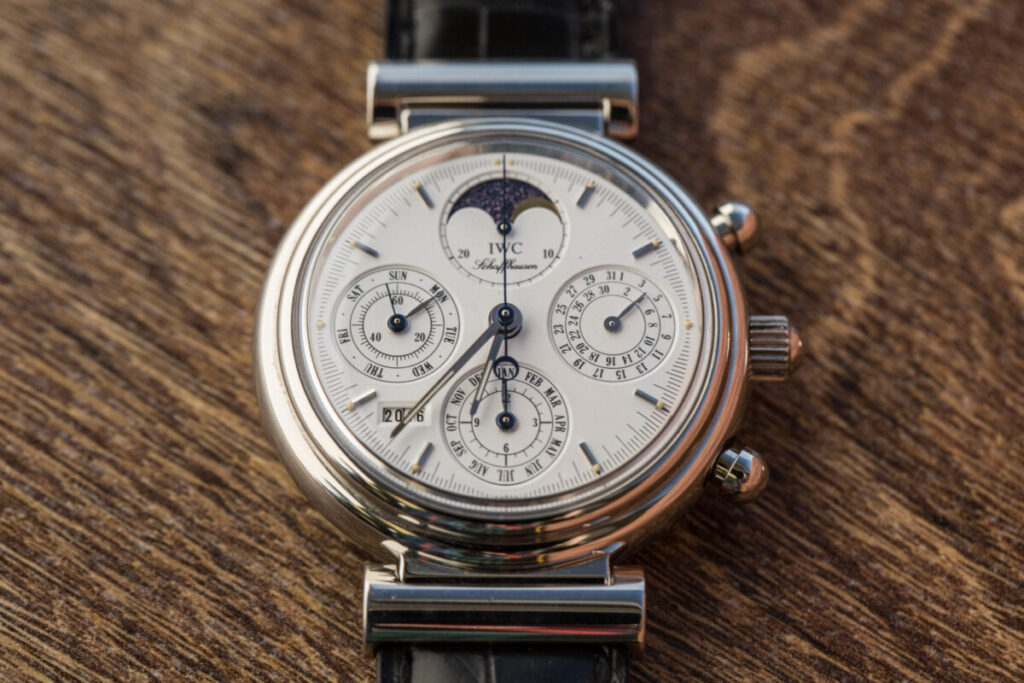
Taking date complications a step further, calendar complications provide more comprehensive timekeeping information:
- Triple Calendar: Also called a “complete calendar,” this complication displays the day, date, and month.
- Annual Calendar: Similar to the triple calendar but also shows the year. It requires manual adjustment once a year in February.
- Perpetual Calendar: The most advanced calendar complication, it automatically adjusts for months with different numbers of days and even accounts for leap years.
- EOT (Equation of Time) Calendar: A highly sophisticated complication that measures the difference between standard time and actual solar time based on the sun’s position.
Dual Time Zone Complications
For frequent travelers or those who work with international teams, dual time zone complications are incredibly useful:
- Dual Time: Displays two time zones simultaneously using the same movement.
- GMT Hand: Features an additional hand that points to a 24-hour scale, typically on the bezel, indicating a second time zone.
- Fixed Hour Hand GMT: Designed for pilots, this complication includes an extra hour hand that makes one revolution per day.
- World Time Zone: Displays the time in multiple time zones around the world, usually via rotating bezels with city names.
Chronograph Complications
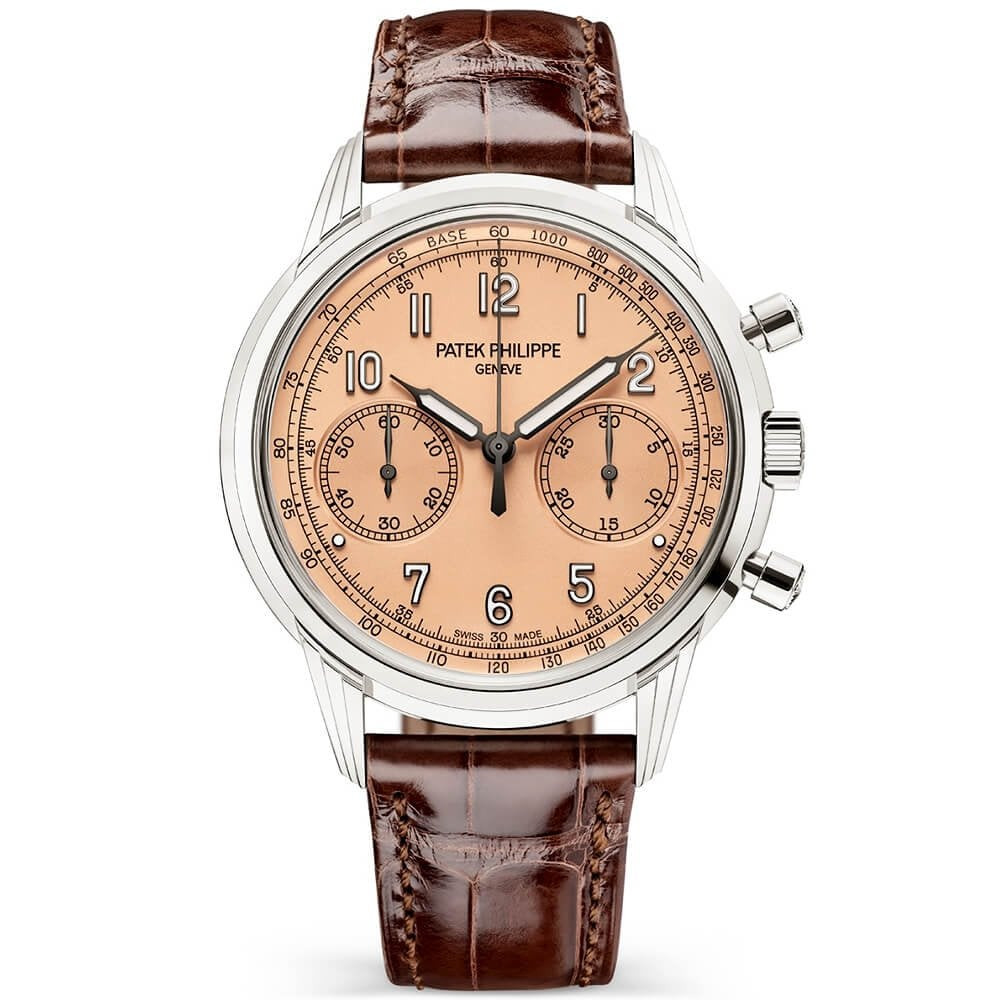
Chronographs are among the most popular and versatile watch complications. These stopwatch functions come in various forms:
- Basic Chronograph: Typically features three subdials for elapsed seconds, minutes, and hours, along with a central seconds hand for precise timing.
- One-Button Mono-Poussier Chronograph: Uses a single button for start, stop, and reset functions.
- Flyback Chronograph: Allows for quick resetting and restarting of the chronograph function, ideal for timing consecutive events.
- Split-seconds/Rattrapante Chronograph: Features two second hands to measure two separate time intervals simultaneously.
- Tachymeter Scale: Often found on chronographs, this scale on the bezel helps measure speed over a known distance.
Other Notable Complications
- Power Reserve Indicator: Displays the remaining energy in the watch’s mainspring, usually in hours.
- Tourbillon: While not strictly a complication, this rotating cage housing the escapement enhances accuracy by countering the effects of gravity.
- Moonphase Complication: Shows the current phase of the moon, originally developed for maritime use but now prized for its aesthetic appeal.
- Jump Hour Complication: Displays the hour in a window that “jumps” to the next number every 60 minutes.
- Minute Repeater: Chimes the current time on demand when a lever is activated.
- Alarm: Sets off an audible alert at a predetermined time.
The Enduring Appeal of Watch Complications
In an age where smartphones and smartwatches can perform countless functions, one might wonder about the relevance of mechanical watch complications. However, their appeal goes far beyond mere functionality:
- Artistry and Craftsmanship: Watch complications represent the pinnacle of horological engineering and artistry. The skill required to create intricate mechanisms like perpetual calendars or minute repeaters is truly remarkable.
- Heritage and Tradition: Many complications have rich histories dating back centuries. Owning a watch with these features connects the wearer to a long tradition of timekeeping innovation.
- Collectibility: Complicated watches are often highly sought after by collectors, with rare or historically significant pieces commanding astronomical prices at auction.
- Personal Expression: The complications a person chooses for their watch can reflect their lifestyle, interests, or profession. A frequent traveler might opt for a GMT function, while a racing enthusiast might prefer a chronograph with a tachymeter.
- Appreciation of Mechanics: In a digital world, there’s something captivating about a purely mechanical device that can track the phases of the moon or account for leap years without any electronic assistance.
Conclusion
Watch complications represent the pinnacle of horological engineering and artistry. From the simple elegance of a date window to the mind-boggling intricacy of a perpetual calendar, these features transform watches from mere timekeepers into miniature marvels of human ingenuity.
While their practical usefulness may have diminished in the digital age, the appeal of watch complications endures. They serve as a testament to human creativity, precision engineering, and our enduring fascination with measuring and marking the passage of time in ever more intricate ways.
Whether you’re a seasoned watch collector or simply someone who appreciates fine craftsmanship, understanding watch complications can deepen your appreciation for these remarkable timepieces. Each complication tells a story – of innovation, of tradition, and of the relentless human drive to push the boundaries of what’s possible within the confines of a wristwatch.
As we look to the future, it’s clear that watch complications will continue to evolve and surprise us. They remain a vibrant field for innovation, blending age-old techniques with cutting-edge technology to create timepieces that are not just instruments, but works of art to be cherished for generations to come.

